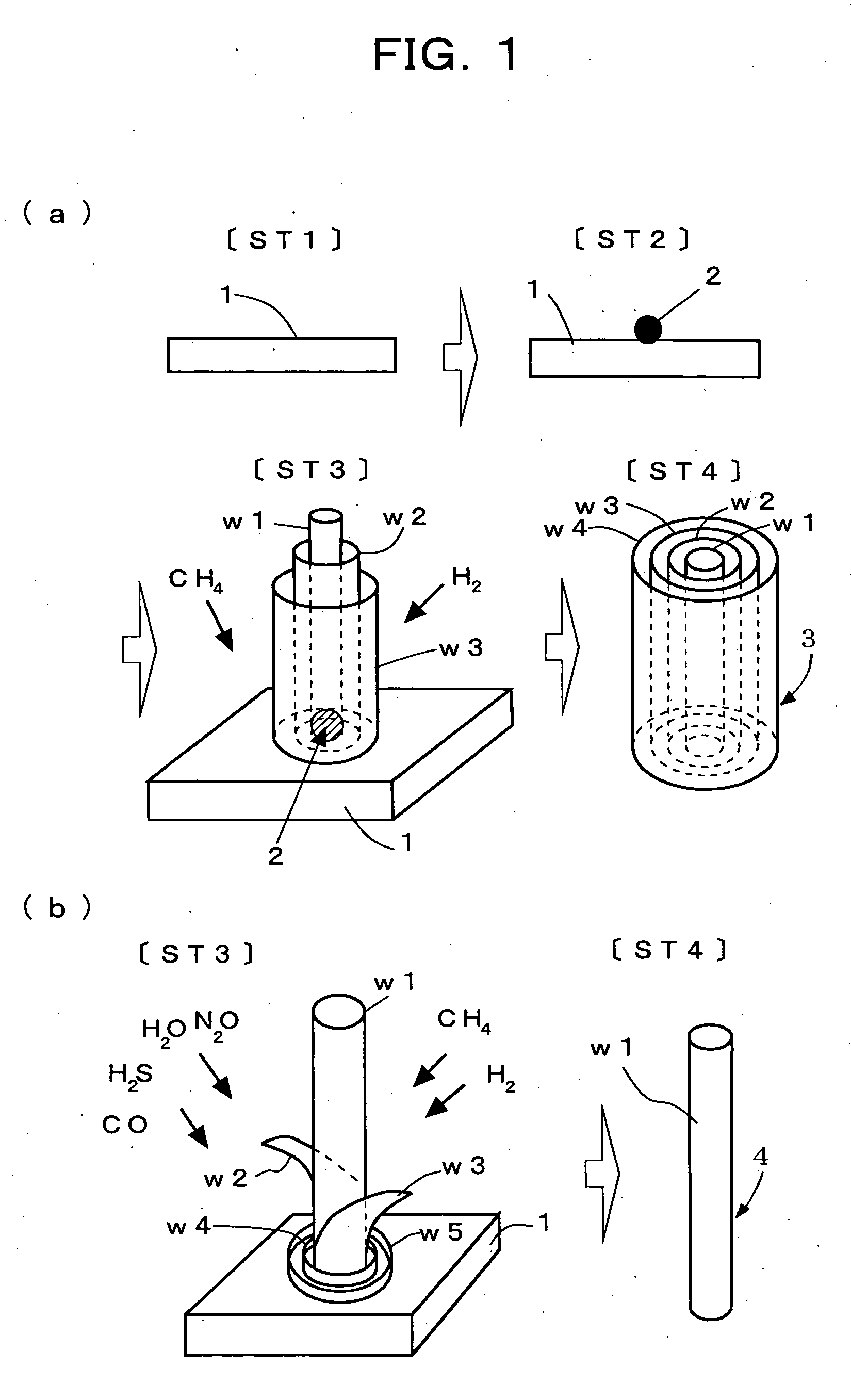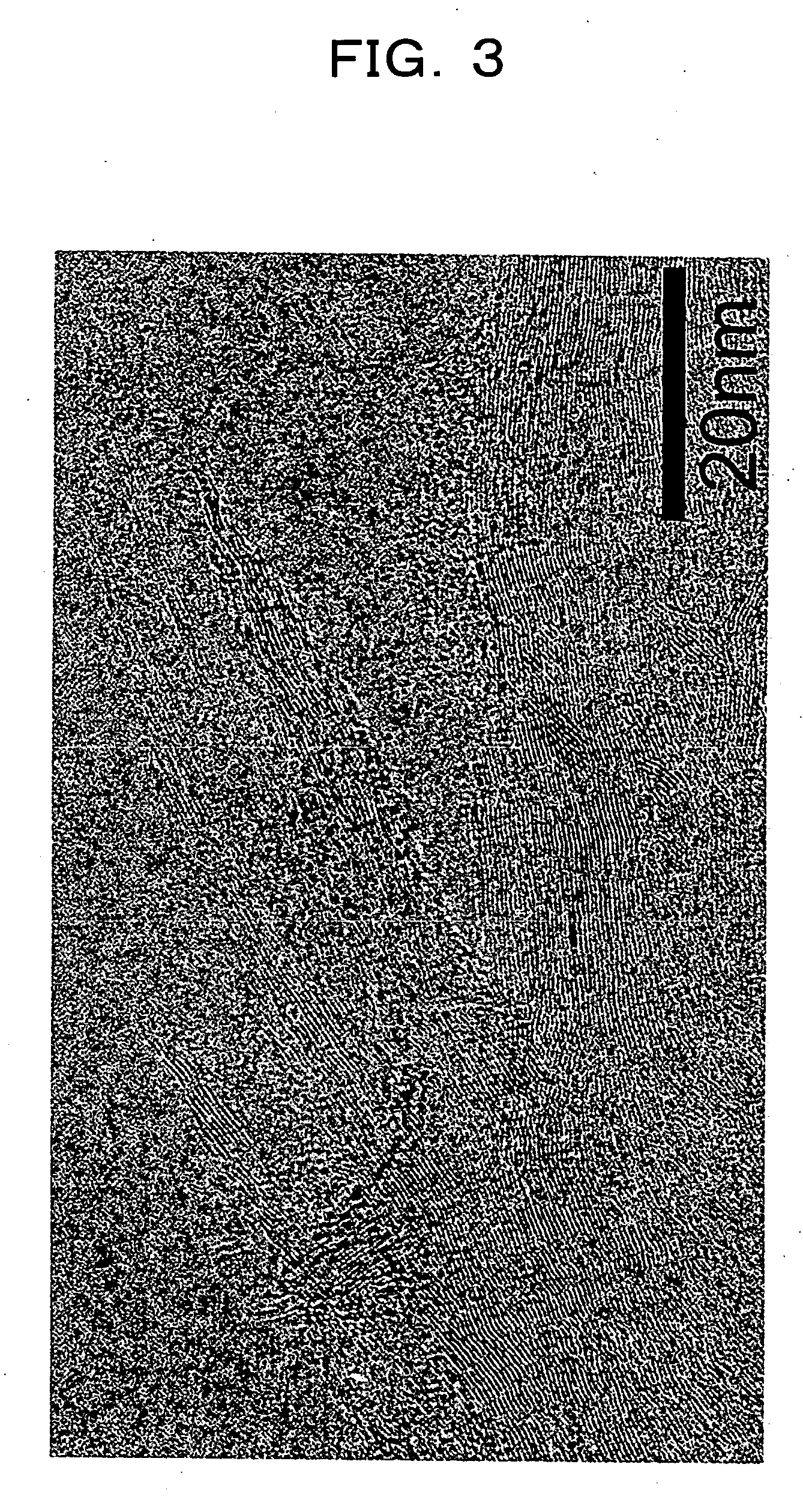Method for preparing functional nanomaterials utilizing endothermic reaction
a technology of endothermic reaction and functional nanomaterials, which is applied in the direction of carbonsing rags, carbides, fullerenes, etc., can solve the problems of high density, inability to put the method to practical use, and difficulty in safe storage and storage, and achieve high yield.
- Summary
- Abstract
- Description
- Claims
- Application Information
AI Technical Summary
Benefits of technology
Problems solved by technology
Method used
Image
Examples
example 2
ut to demonstrate that the present method is capable of forming monolayer carbon nanotubes from multilayer carbon nanotubes.
Multilayer carbon nanotubes bulk-produced and trial-sold were reacted with hydrogen sulfide in a silica tube. The vacuum in the silica tube before it was charged with hydrogen sulfide had an ultimate value of 1×10−6 Pa, hydrogen sulfide was charged at a pressure of 1×10−4 Pa, and the multilayer carbon nanotubes were heat treated at a temperature of 230° C. or more.
More than 45% of the multilayer carbon nanotubes were found to have been converted into monolayer carbon nanotubes. When these carbon nanotubes were used as a hydrogen occluding material to occlude hydrogen, it had a weight by energy density ratio about 1.05 times greater than that of a hydrogen occluding nickel alloy.
The present method is thus seen to allow making monolayer nanotubes from multilayer nanotubes in an extremely simple way and at a high yield. Since multilayer nanotubes can be mass-...
example 3
ut to demonstrate that the present method is capable of forming a metal containing fullerene or a multilayer metal containing fullerene.
A monolayer carbon nanotube containing Gd (gadolinium) metal atoms was reacted with hydrogen sulfide in a silica tube. The vacuum in the silica tube before it was charged with hydrogen sulfide had an ultimate value of 1×10−6 Pa, hydrogen sulfide was charged at a pressure of 1×10−4 Pa, and the monolayer carbon nanotube was heat treated at a temperature of 230° C. or more.
While a yield of 100% was not achieved since Gd metal atoms are not equi-distantly spaced apart in the monolayer carbon nanotube, metal containing fullerenes were obtained which correspond to about 20.5% of the Gd metal atoms in number.
Also, when a multilayer carbon nanotube that contains Gd metal containing fullerenes was likewise processed, multilayer metal containing fullerenes were obtained which correspond to about 5 to 8% of the Gd metal containing fullerenes in number.
T...
PUM
 Login to View More
Login to View More Abstract
Description
Claims
Application Information
 Login to View More
Login to View More - R&D
- Intellectual Property
- Life Sciences
- Materials
- Tech Scout
- Unparalleled Data Quality
- Higher Quality Content
- 60% Fewer Hallucinations
Browse by: Latest US Patents, China's latest patents, Technical Efficacy Thesaurus, Application Domain, Technology Topic, Popular Technical Reports.
© 2025 PatSnap. All rights reserved.Legal|Privacy policy|Modern Slavery Act Transparency Statement|Sitemap|About US| Contact US: help@patsnap.com



